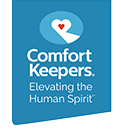Mobility is a serious safety issue. Within a year, 20% of people with hip fractures die from complications.
Problems associated with aging can affect a person’s ability to move around, or mobility. Mobility problems may include unsteadiness while walking, difficulty getting in and out of a chair, or falls. Muscle weakness, joint problems, pain, disease, and neurological difficulties can all contribute to mobility problems. Sometimes several mild problems combine and occur simultaneously, affecting mobility. It can also make the difference between living at home or in a facility.
The primary mobility problem that older people experience is falls. Falls are a major cause of injury and death, so prevention is important. Older bones break more easily, heal less quickly, and may not heal completely. If a hip is fractured, canes, walkers, or wheelchairs might be permanently needed. If the senior is afraid of falling, address it, or he or she may become afraid to move around.
Doctors often check for heart and lung problems, and screening for mobility can be put off, or even overlooked. This can be surprising, since tests for mobility can be relatively simple. With the “Get Up and Go Test”, a person is asked to stand up from sitting in a chair, walk 10 feet, turn around, walk back to the chair, and sit down. How long it takes and how steady the person is can then be noted. Another way is just to watch how quickly people walk. They should walk faster than a yard per second. If you walk that or faster, you’re in the normal range; if you’re slower, you may have a gait problem, which increases the chances of falling. An approach University of Alabama researchers use is to ask two simple questions:
For health or physical reasons . . .
- Do you have difficulty climbing up 10 steps or walking one-quarter of a mile?
- Have you modified the way you climb 10 steps or walk a quarter of a mile?
These questions can be asked prior to testing. A senior probably knows if he or she is having trouble climbing stairs ─ and walking one-quarter of a mile is equal to one lap around a medium-sized mall’s upper level.
Ways to help prevent senior mobility problems ─ or reduce the risk of them getting worse
- Stay active. A regular program of exercise can strengthen muscles and improve flexibility. With increased strength and balance, a senior is better able to maneuver and avoid a potential fall.
- Maintain a healthy weight and a healthy diet. It’s simply easier to get around without carrying extra weight, and there is less stress on bones and joints.
- Check the possible influence of medications. Prescription and over-the-counter medicines, herbal or other remedies can result in drowsiness or distraction, which can lead to falls. If medications affect your balance or alertness, discuss a lower dose or different medicine with a physician.
- Identify fall hazards in the home and eliminate them. Pay special attention to safety equipping the bathroom and kitchen. Use rubber appliqués or mats, raised toilet seats, and handrails where necessary. Clear the home of clutter and loose rugs or wires. Good lighting is essential; use night-lights in bathrooms, hallways, and, if needed, the bedroom.
- Ask the doctor about walking aids. If a senior is just a little bit unsteady on his or her feet, a cane or walker can be used. Skip the drugstore, and first check with a doctor or physical therapist to find out what type is needed. A physical therapist will make sure the cane or walker is adjusted to the right height, and can teach the senior how to use it.
- Test vision and hearing regularly. Seeing poorly or not hearing well can cause mobility problems and lead to falls. A senior should be extra careful with new bifocal or tri-focal eyeglasses.
- Make sure proper footwear is worn. Sturdy, well-fitted, low- or flat-heeled shoes with good grip and support are recommended. In bad weather, exercise indoors.
- Create opportunities for socializing. Look for community activities that keep seniors mobile. Check with local hospitals, senior centers, and community centers to see if they offer exercise or walking programs. An exercise or walking partner can help seniors stick to a program.
- Medical alert services can provide peace of mind. If you worry about a senior having an emergency while alone, consider a medical alert service to connect him or her to help 24/7, at the push of a button.
- Don’t help too much. Don’t do everything for someone because you are afraid that something might happen. He or she needs to stay active and most likely prefers to remain independent.
- Tell the doctor about mobility problems, and mention any falls. Certain diseases like arthritis can affect mobility. Risks can often be reduced if the medical condition is diagnosed and treated.
Comfort Keepers® can help. About one-quarter of Canadians over age 65 need help with everyday activities such as eating, bathing, and getting in and out of bed or a chair. Our trained caregivers can help with these and other tasks, while providing companionship. Comfort Keepers can also have someone perform home safety assessments to identify fall hazards, and make recommendations to improve safety. Call your local office today!
References:
- HealthinAging.org. “Eldercare at Home: Mobility Problems”. Web. 2016.
- AgingCare.com. “Elderly & Senior Mobility Problems”. Web. 2016
- Care.com. “Caring for Seniors with Mobility Problems”. Web. 2016.
- Harvard Health Publications, Harvard Medical School. Web. 2013.

